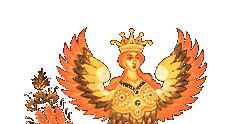Description:
On this interesting composition we can see Russian hunting with Borzoi Dogs.
The Russian concept of hunting trials was instituted during the era of the Tsars. As well as providing exciting sport, the tests were used for selecting borzoi breeding stock; only the quickest and most intelligent hunting dogs went on to produce progeny. For the aristocracy these trials were a well-organized ceremony, sometimes going on for days, with the borzoi accompanied by mounted hunters and Foxhounds on the Russian steppe. Hares and other small game were by far the most numerous kills, but the hunters especially loved to test their dogs on wolf. If a wolf was sighted, the hunter would release a team of two or three borzoi. The dogs would pursue the wolf, attack its neck from both sides, and hold it until the hunter arrived. The classic kill was by the human hunter with a knife. Wolf trials are still a regular part of the hunting diploma for all Russian sightdog breeds of the relevant type, either singly or in pairs or trios, in their native country.
In the 1917 Revolution, large numbers of native Psovoi/Borzoi were destroyed by the revolutionaries. The Tsars had turned them into a symbol of affluence and tyranny, and they were not welcomed into the new world of the Soviet Union. Some noblemen took it upon themselves to shoot their own dogs rather than allow them to fall into the hands of militants. However, the Psovoi survived along with the other borzaya variants in the Russian countryside.
This intersting box has been created by talented artist Irina Bokova from the village of Palekh.
The details on a box are amazing!
The scene is painted with traditional Palekh colors-- bright orange, red and blue tones against the black background. It is richly decorated with gold and aluminum paints.
The edges of the lid and the box's sides are decorated with beautiful gold ornamentation.
The box is constructed from paper-mache. Black lacquer is used to paint the exterior of the piece while red lacquer completes the interior of the work.
The hinge is fastened to the top of the composition. The box rests on four small legs. The box is signed and dated (2007) by the artist at the bottom of the composition in gold paints.

